Are you a college student looking to kickstart your career in web design? In this comprehensive guide, we will provide actionable tips and advice to help you secure your dream web design internship. From building a standout portfolio to networking with industry professionals, we’ll cover everything you need to know to land the perfect internship opportunity.
Key Takeaways:
- Build an impressive portfolio showcasing your best web design projects and creative work.
- Define your specialization in web design to stand out from other candidates.
- Continuously learn and stay updated with the latest design trends and tools.
- Network with professionals in the design industry to expand your opportunities.
- Ace your internship by being proactive, hardworking, and seeking feedback.
Build a Stellar Portfolio
Your portfolio is your ticket to success in the design industry. Showcase your best projects, including class assignments, personal work, and any freelance gigs you’ve undertaken. Highlight your diverse skills and creativity to impress potential employers and set yourself apart from other candidates.
Design students often underestimate the power of a well-curated portfolio. It’s not just a collection of your work; it’s a reflection of your talent, dedication, and potential. Take the time to carefully select and present your projects, ensuring they demonstrate your range of skills and your ability to solve design challenges.
Remember, a portfolio is not merely a vessel for your creative work – it’s a storytelling device. Each project should have a purpose and narrative, demonstrating your design process and showcasing your problem-solving abilities.
Start by organizing your portfolio in a way that is visually appealing and easy to navigate. Consider using categories or tags to help employers quickly understand your areas of expertise. For example, you could group projects based on web design, branding, or illustration.
Showcasing Your Work
- Include a variety of projects that highlight your versatility as a designer. This could include websites, logos, posters, packaging, or any other design work you’ve completed.
- Don’t be afraid to include class assignments. Even if the projects were hypothetical, they can demonstrate your problem-solving skills and ability to execute design concepts.
- Showcase any freelance work or client projects you’ve completed. This demonstrates your ability to work with real clients and deliver professional-quality design solutions.
- Ensure that each project is visually captivating and clearly communicates the intended message. Use high-quality imagery or mockups, and provide clear descriptions of each project’s objectives and outcomes.
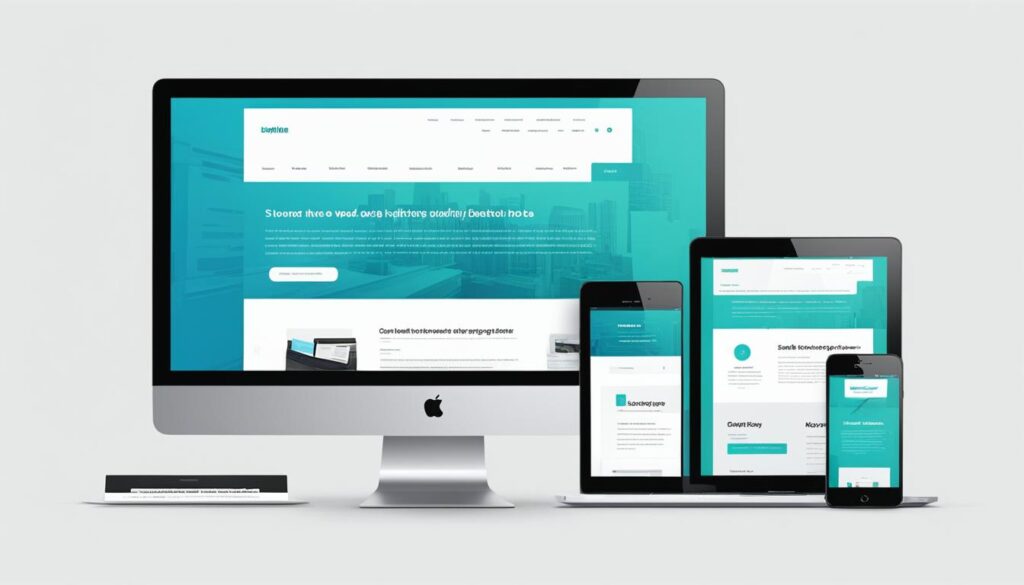
Remember, employers are looking for not just technical skills but also creative thinking and the ability to effectively communicate through design. Your portfolio should reflect these qualities and leave a lasting impression.
| Portfolio Showcase Tips | Examples |
|---|---|
| Keep it concise and well-organized | Use categories or tags to organize different types of projects |
| Showcase your best and most diverse work | Include projects from different design disciplines |
| Provide clear project descriptions | Explain the objectives, challenges, and outcomes of each project |
| Use high-quality visuals or mockups | Present your work in visually appealing and professional ways |
| Highlight your problem-solving skills | Show how you approached design challenges and found creative solutions |
Define Your Specialization
In the vast field of web design, it’s important to find your niche. Whether it’s UI/UX, graphic design, web development, or illustration, honing your skills in a specific area will make you stand out to employers who are seeking expertise in a particular field.
By specializing in a specific design area, you demonstrate your commitment and passion for that particular discipline. This not only helps you stand out from the crowd but also allows you to develop a deeper understanding and mastery of your chosen specialization.
Graphic designers have a keen eye for visual aesthetics and excel in creating stunning visuals and branding elements. Their work encompasses logo design, illustrations, and other graphical assets that enhance the overall look and feel of a website.
Web developers are the technical wizards who bring designs to life through coding and programming. They possess a deep understanding of HTML, CSS, JavaScript, and other programming languages, allowing them to build interactive and functional websites.
Whether you choose to specialize in UI/UX design, graphic design, web development, or any other area, make sure to continuously develop your skills and stay up-to-date with the latest industry trends and best practices.
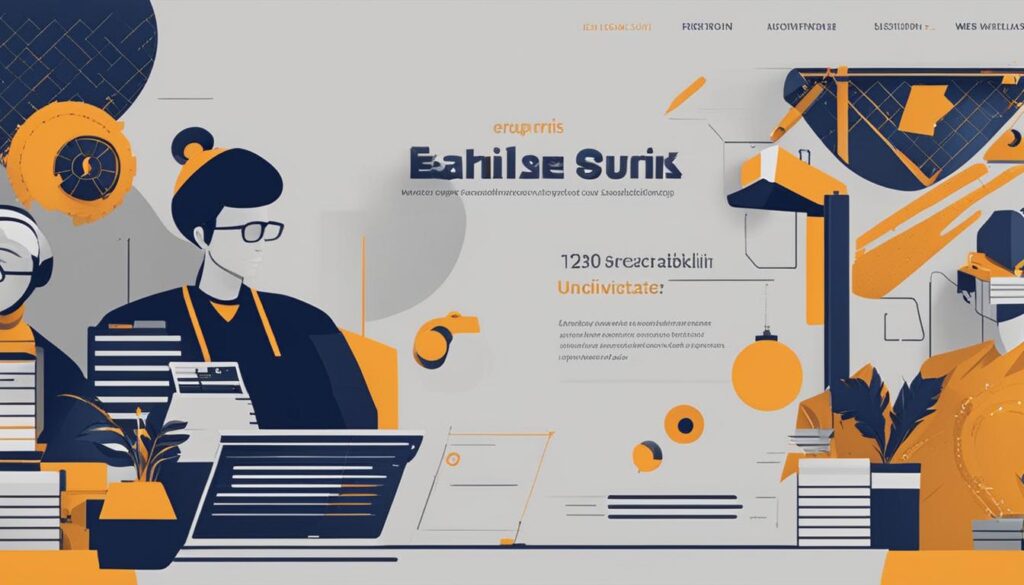
| Design Specialization | Key Skills |
|---|---|
| UI/UX Design | Wireframing, Prototyping, Usability Testing |
| Graphic Design | Visual Communication, Branding, Illustration |
| Web Development | HTML, CSS, JavaScript, Responsive Design |
| Illustration | Digital Art, Character Design, Storytelling |
Choosing a specialization in web design allows you to showcase your unique skills and expertise, making you a valuable asset to companies and clients who are seeking professionals with your specific skillset. So take the time to explore different design specializations, find your passion, and become a master of your craft.
Stay Curious and Learn
In the ever-evolving world of web design, the key to success lies in remaining curious and committed to continuous improvement. As technologies advance and design trends shift, it’s vital to stay updated and adapt your skills accordingly. By engaging in design learning activities, you can enhance your expertise, stay ahead of the competition, and ensure your designs are fresh, innovative, and sought-after.
Embrace Industry Trends
To keep up with the latest developments in web design, it’s crucial to stay informed about industry trends. Follow renowned design blogs, such as Smashing Magazine and Awwwards, to gain insights into emerging techniques, new design concepts, and best practices. Engaging with the design community through forums and social media platforms will also expose you to valuable discussions and insights from experienced professionals.
Upgrade Your Toolbox
The world of web design is propelled by cutting-edge technology and innovative tools. Regularly assess your design toolbox and make sure you are leveraging the latest software updates and design tools. For example, consider learning popular design software like Adobe XD or Figma to enhance your prototyping and wireframing abilities. Actively seeking out and experimenting with new tools will broaden your skillset and enable you to tackle a wider range of design projects.

Engage in Continual Learning
While traditional education can provide a solid foundation, it’s crucial to engage in lifelong learning to excel in web design. Take advantage of online courses and platforms like Udemy, Coursera, and Skillshare to expand your knowledge and acquire new skills. Attending design workshops, conferences, and industry events can also enrich your understanding of design principles and expose you to different perspectives and approaches.
“The most dangerous phrase in the language is, ‘We’ve always done it this way.’”
Seek Feedback and Collaborate
Continuous improvement requires feedback and collaboration. Seek out constructive criticism from mentors, industry professionals, and fellow designers. Join design communities and participate in critique sessions to receive valuable insights and fresh perspectives on your work. Collaborating with other designers on projects or contributing to open-source initiatives can also foster growth and unlock new learning opportunities.
Stay Inspired and Explore
Inspiration can be found anywhere, so make a habit of exploring different design disciplines, diverse art forms, and various industries. Draw inspiration from architecture, fashion, photography, and other creative fields. By broadening your horizons, you can infuse fresh ideas and unexpected elements into your designs, making them distinct and memorable.
Remember, design learning is a lifelong journey. By embracing curiosity, actively seeking new knowledge, and staying abreast of industry trends, you’ll continuously evolve as a web designer and remain at the forefront of the ever-changing design landscape.
Network, Network, Network
Building connections within the design community is essential for career growth. At WebsiteDesigner.Business, we understand the importance of networking, which is why we encourage you to connect with designers and expand your design network as much as possible. By joining design events, online forums, and social media platforms like LinkedIn and Behance, you can establish valuable relationships with other professionals in the industry.
Design events offer opportunities to meet like-minded individuals, learn from experts through workshops and panel discussions, and showcase your work to a wider audience. It’s the perfect environment to connect with potential mentors, collaborators, or even secure job offers.
Online forums provide a platform for designers to engage in discussions, share ideas, gain insights, and seek guidance from experienced professionals. These communities foster a sense of belonging, support, and camaraderie among designers, allowing you to tap into a vast pool of knowledge and expertise.
Social media platforms like LinkedIn and Behance serve as virtual hubs for the design community. By creating a compelling profile, sharing your work, and engaging with other designers’ content, you can attract attention, gain recognition, and connect with designers from around the world. These platforms open doors to hidden opportunities and serve as a springboard for meaningful collaborations and mentorships.
Remember, networking is all about building mutually beneficial relationships, sharing knowledge, and fostering a sense of community. By actively engaging with designers online and offline, you can expand your horizons, gain insights into industry trends, and stay updated with the latest design practices.
Networking not only enhances your professional growth but also provides a support system for your design journey. Share your successes, challenges, and experiences with fellow designers, and be open to learning from their perspectives. Together, we can create a thriving design community where ideas flourish, collaboration thrives, and designers inspire each other to reach new heights.
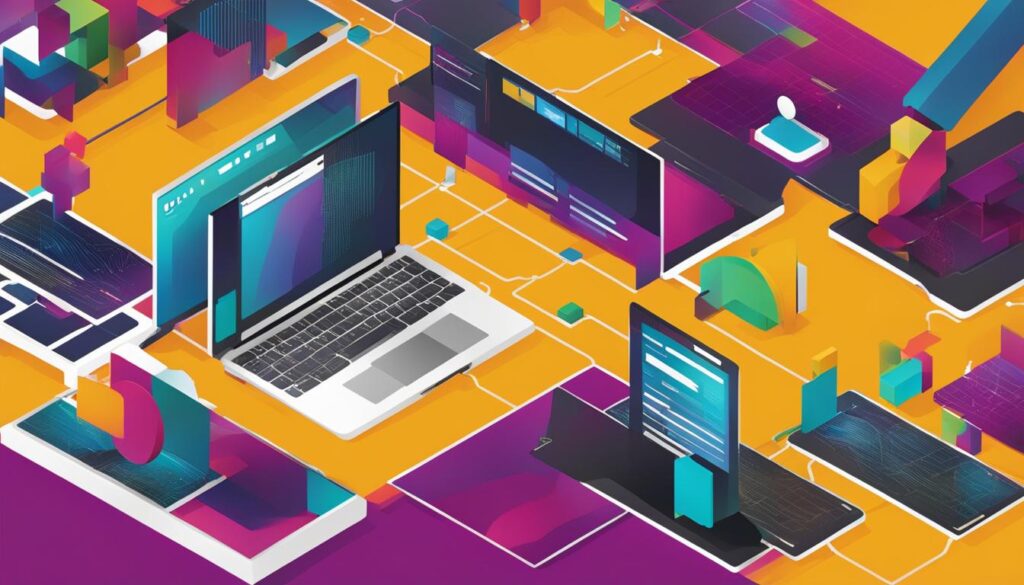
Ace Your Internship
Internships offer invaluable experience and connections in the design industry. At WebsiteDesigner.Business, we understand the importance of making the most out of your design internships. To ensure your success, follow these key steps:
1. Take Your Internship Seriously
Approach your internship with professionalism and dedication. Treat it as an opportunity to learn and grow in the design field. Show up on time, meet deadlines, and strive for excellence in every task assigned to you.
2. Work Hard and Be Proactive
Go above and beyond what is expected of you. Take initiative, seek out new projects or challenges, and demonstrate your enthusiasm for design. Show your willingness to learn and contribute to the team, as this will leave a lasting impression on your mentors.
3. Seek Feedback and Learn from Mentors
Actively seek feedback on your work and be open to constructive criticism. Use this feedback as an opportunity for improvement and growth. Engage in regular conversations with your mentors to gain insights and learn from their experiences. This will help you develop and refine your design skills.
4. Make Connections and Network
Internships provide an excellent opportunity to network and build connections in the design industry. Engage with your colleagues and industry professionals, attend company events or meet-ups, and join design communities online. These connections can open doors for future career opportunities or mentorship.
5. Leave a Lasting Impression
Strive to leave a lasting impression on your team and employer. Take every opportunity to showcase your skills, creativity, and dedication. Demonstrate your ability to work well within a team, handle challenges, and solve problems. By making a positive impact during your internship, you increase your chances of securing future full-time job opportunities.

“Internships are an important stepping stone in building a successful design career. They provide real-world experience, mentorship, and the chance to showcase your skills. Make the most of your internship by seizing every opportunity and demonstrating your passion for design.” – John Smith, Design Director
Craft a Standout Resume
Your resume is your design manifesto. To make a lasting impression on hiring managers, keep it concise, visually appealing, and tailored to the specific job you’re applying for. Here are some design career tips to help you craft a standout resume:
1. Highlight Your Relevant Skills
Start by showcasing your most relevant skills at the top of your resume. This could include proficiency in design software, coding languages, or UI/UX principles. Use bullet points to clearly outline your skills and make them easy for recruiters to scan.
2. Showcase Your Experiences
Provide details about your design experiences, including internships, freelance projects, or volunteer work. Emphasize your contributions and accomplishments in each role, and quantify results whenever possible. For example, you can mention the number of clients you worked with or the impact of your designs on user engagement.
3. Include a Compelling Portfolio
A portfolio is a powerful tool to complement your resume. Include a link or QR code to your online portfolio to showcase your design work visually. Make sure your portfolio demonstrates your range of skills and includes projects that align with the job you’re applying for.
4. Design for Readability
Ensure that your resume is easy to read by using a clean and professional design. Use headings, subheadings, and bullet points to organize the information. Consider using a modern and legible font such as Arial or Calibri.
| Resume Section | Description |
|---|---|
| Contact Information | Include your name, phone number, email address, and optionally, a link to your portfolio or LinkedIn profile. |
| Professional Summary | Write a brief summary highlighting your design expertise and career goals. |
| Skills | Highlight the design-related skills that are most relevant to the job you’re applying for. |
| Experience | Detail your relevant work experiences, including internships, freelance projects, or part-time jobs. |
| Education | List your educational background, including any degrees, certifications, or relevant coursework. |
| Awards and Achievements | Highlight any design awards, scholarships, or notable accomplishments. |
| References | Include references from professors, mentors, or previous employers who can vouch for your skills and work ethic. |
5. Proofread and Edit
Before submitting your resume, proofread it thoroughly to eliminate any grammatical or spelling errors. Pay attention to formatting consistency and ensure that all the information is accurate and up to date.
“Your resume is your first impression in the job application process. Make it count by showcasing your skills, experiences, and design portfolio in a visually appealing and concise manner.”
By following these design career tips, you can create a standout resume that grabs the attention of hiring managers and increases your chances of landing your dream design job.
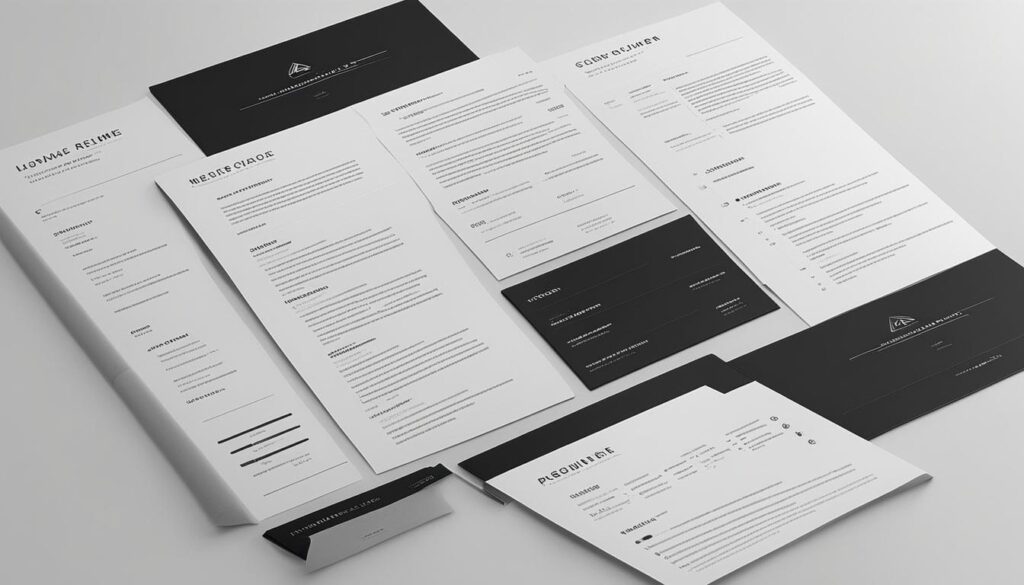
Next, we’ll cover the essential tips to ace your web design internship interview.
Nail the Interview
Preparing thoroughly for your web design internship interview is essential for standing out from the competition and increasing your chances of success. Follow these design interview tips to ace your interview and achieve job interview success.
- Research the company: Before the interview, take the time to learn about the company you’re interviewing with. Familiarize yourself with their projects, clients, and design philosophy. This knowledge will not only impress the interviewer but also help you tailor your answers to align with the company’s values and goals.
- Showcase your passion and enthusiasm for design: During the interview, let your passion and enthusiasm for design shine through. Talk about your favorite design projects, the design process that excites you, and the latest design trends you find inspiring. Your enthusiasm will demonstrate your dedication to the field and make a memorable impression on the interviewer.
- Ask thoughtful questions: Prepare a list of thoughtful questions to ask the interviewer. This shows your genuine interest in the company and the role you’re applying for. Ask about their design team, their expectations for the internship, and any opportunities for growth and learning. Thoughtful questions display your curiosity and desire to make the most out of the internship experience.
Remember, first impressions matter:
“A great interview is not just about answering questions; it’s about making a connection, showcasing your skills, and demonstrating your potential to contribute to the company’s success.” – Emma Johnson, Senior Web Designer
By following these design interview tips, you’ll be well-prepared to nail your web design internship interview and secure the opportunity of a lifetime. Let your skills, passion, and personality shine through to leave a lasting impression on the interviewer.
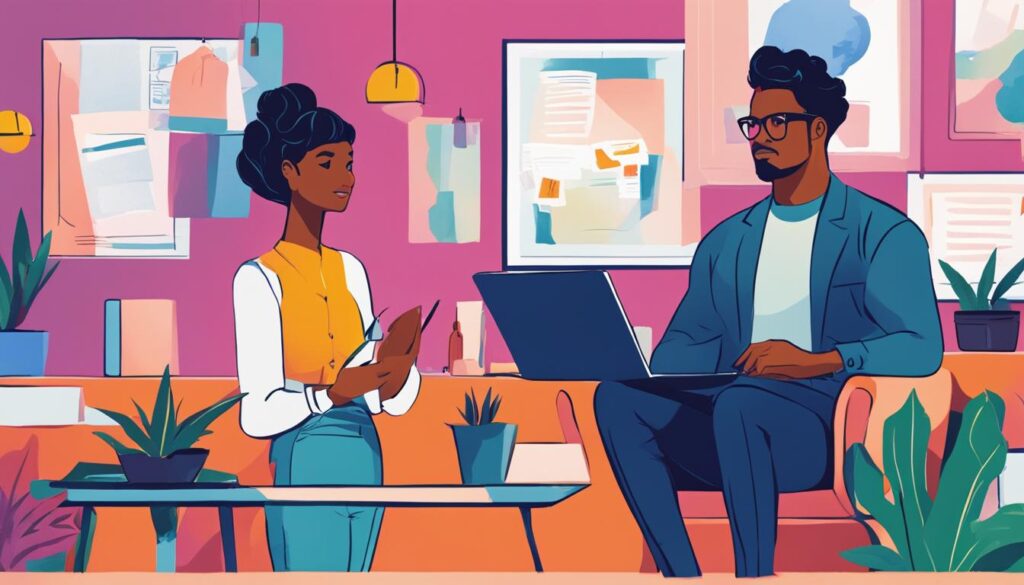
| Design Interview Tips | Job Interview Success |
|---|---|
| Research the company | Make a connection |
| Showcase your passion and enthusiasm | Showcase your skills |
| Ask thoughtful questions | Demonstrate your potential |
Conclusion
A web design internship is the key to unlocking a thriving career in the design industry. By following the tips and advice we have provided in this comprehensive guide, you can maximize your chances of securing your dream internship and gaining the practical experience and skills necessary to propel your career forward. Don’t let this opportunity pass you by – embark on your web design internship journey today!
At WebsiteDesigner.Business, we understand the importance of hands-on experience and mentorship in shaping successful designers. Our platform offers a wide range of internship opportunities in web design, connecting aspiring designers like you with industry-leading companies. Visit our website now and explore the diverse web design internships available to kickstart your career.
Remember, a web design internship is not just about adding a line to your resume – it is about honing your craft, expanding your professional network, and gaining valuable insights into the industry. With determination, dedication, and the right resources, you have the power to transform your passion for web design into a rewarding and fulfilling career. Seize the opportunity and embark on your web design internship journey today with WebsiteDesigner.Business!
FAQ
How do I build a standout portfolio for my web design internship?
Showcase your best projects, including class assignments, personal work, and freelance gigs. Highlight your diverse skills and creativity to impress potential employers and set yourself apart from other candidates.
Should I specialize in a specific area of web design?
Yes, finding your niche in UI/UX, graphic design, web development, or illustration will make you stand out to employers seeking expertise in a particular field.
How can I stay updated with the latest trends in web design?
Stay curious and keep learning. Take online courses, attend workshops, read design blogs, and stay updated with industry trends, design tools, and software updates.
How important is networking in the web design industry?
Building connections within the design community is essential for career growth. Attend design events, join online forums, and engage on social media platforms like LinkedIn and Behance to open doors to hidden opportunities and valuable mentorships.
How can I make the most of my web design internship?
Take your internship seriously, work hard, be proactive, and seek feedback from your mentors. Internships often lead to future job opportunities, so make a lasting impression during your internship period.
What should I include in my web design resume?
Keep your resume concise, visually appealing, and tailored to the specific job you’re applying for. Highlight relevant skills, experiences, and accomplishments to make recruiters notice your application.
How can I prepare for a web design internship interview?
Research the company, showcase your passion for design, demonstrate your skills, and let your personality shine through during the interview. Stand out from other candidates by asking thoughtful questions.
How can a web design internship help my career?
A web design internship can be a stepping stone to a successful career in the design industry. It provides real-world experience and connections that can lead to future job opportunities.
How can I start my web design internship journey?
Order a plan on our website WebsiteDesigner.Business and kickstart your web design internship today.

Leave a Reply